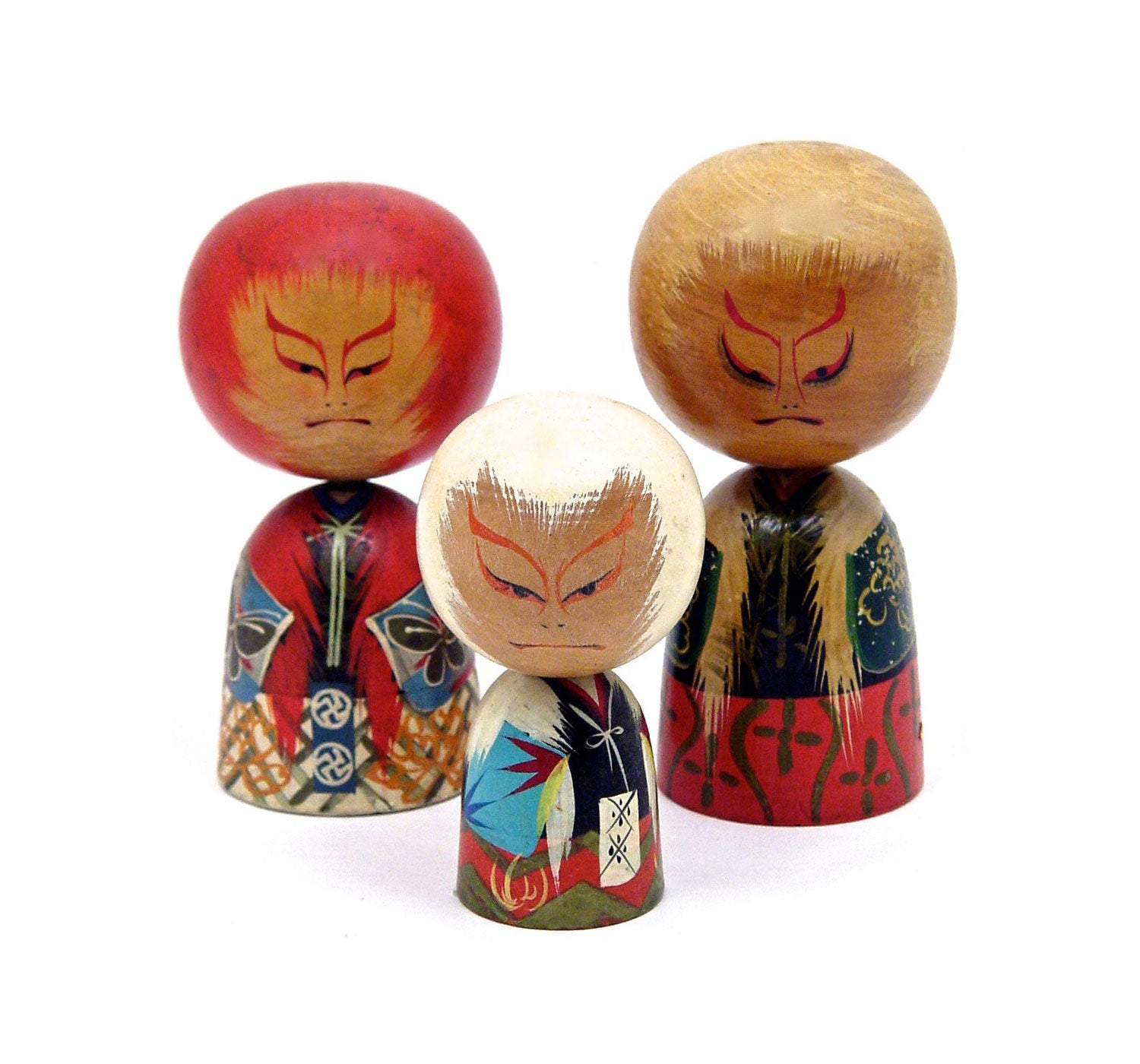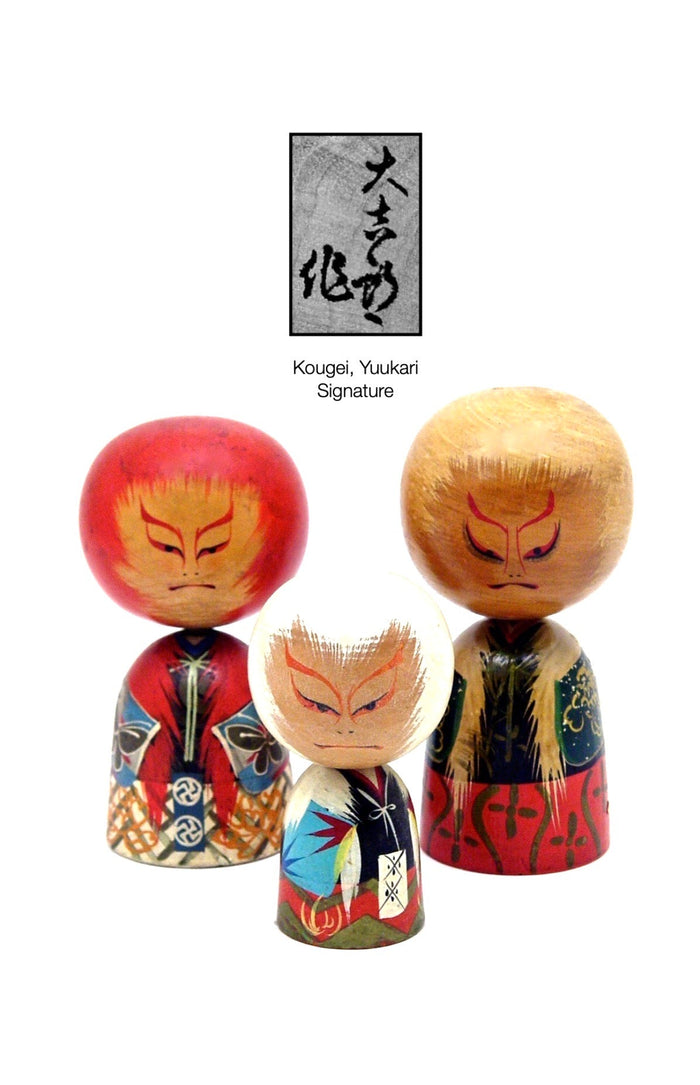
"Shishi-mai | Lion Dancers"
Dimensions: 4-0”h; 3-1/4”h; 4-1/2” h
The three dolls shown are being sold as a set. Each of these small and beautiful wooden dolls have “bobble heads” and been carefully hand painted with a lion’s wild mane flowing from their heads, to evoke the mesmerizing fierceness of the Lion character from the Noh play “Renjishi“, which means, “The Lion Dance“. These figures are based on a folk story about a monk that had a dream in which there were many sorrows and evils plaguing the land. The monk prayed and asked Buddha how he could prevent these evils from occurring. From this legend, the ‘Lion Dancer’ was born, and has been characterized in both Noh Theatre and local festivals in both Japan and China. The facial detailing and particularly the mane are delicately rendered and the robes are beautifully executed and representative of the theatrical costuming of the period. The right hand figure is signed.
Vintage Condition: “As is” with some scattered light wear or stain that does not affect the design, and retains the original craft/workmanship. Any discoloration, chipping/cracking, surface wear or structural damage noted.

Artisan
Woodworker: Kougei, Yuukari
Biographical History:
As collectors, we felt it was most important to represent all Sosaku Kokeshi artists, whether or not each artist has a written account of his/her life. We show the diversity of cultural values and the creative work produced by a multitude of artists.
In researching old writings through articles and books that remain, it is evident that the Kokeshi Craftsperson not only created beautiful forms as toys, but also kept alive cultural values, customs, and fashion through the extensive representations of Kokeshi dolls. The beauty is in the doll and not the signatures, for most masters never signed their dolls. Later they named the dolls, but only when Westerners insisted on signatures because they did not know the artists, so the carvers began to sign their works, for the carvers wanted to promote sales to make a living, during the seasons that did not provide an environment to continue their otherwise daily work.
Collector's note – descriptive qualities, standard characteristics & ornamentation styles:
These wooden dolls have been carefully hand painted with a lion’s wild mane flowing from their heads, to evoke the mesmerizing fierceness of the Lion character from the Noh play “Renjishi“, which means, “The Lion Dance“. The three dolls represented are based on a folk story about a monk that had a dream in which there were many sorrows and evils plaguing the land. The monk prayed and asked Buddha how he could prevent these evils from occurring. Buddha told him through his dream that a lion would protect his people and would fight back advancing evils. From this legend, the ‘Lion Dancer’ was born, and has been characterized in both Noh Theatre and local festivals in both Japan and China. Each doll is beautifully rendered and colorized with traditional costume details. Extremely collectable, difficult to find pieces in great graphic condition, and not faded.
Explore & Learn More about Woodworker: Kougei, Yuukari